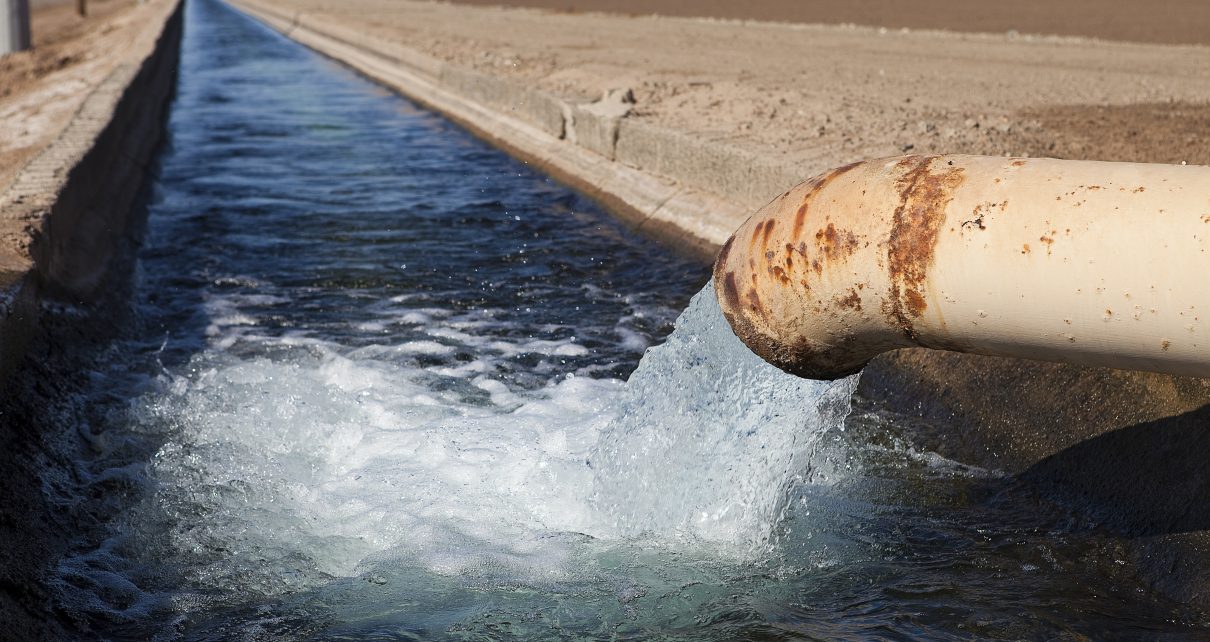
An irrigation canal pumping water. (Photo: Straight 8 Photography/Shutterstock)
Los Angeles County Storm Water Tax – Foresight or Folly?
There were no projects identified: mo master plan of watershed needs, no idea where the highest priority projects should be located
By Mike Lewis, April 10, 2024 7:00 am
After several years of effort, the Los Angeles County Board of Supervisors placed a storm water tax measure on the November ballot in 2018. Dubbed Measure W, it placed a 2.5 cent per square foot of impermeable surface on commercial and residential properties in the County. It was projected to raise $280 million annually. The goal was to finance storm water capture facilities that would prevent pollutants from reaching the ocean and be used to recharge local aquifers to enhance local water supplies. There would also be thousands of new jobs in construction and facility maintenance.
The campaign rhetoric was lofty; the reality is quite different. The funds were to be divided in three ways. Forty percent was to go to the cities on a per capita basis to fund projects. Fifty percent was to go to nine watersheds for regional projects and ten percent was to go to the county for administration, planning and oversight of the funds.
The biggest criticism of the measure was that there was no plan. Unlike transportation measures, school bonds or park bonds where there are clearly identified projects, schedules, and budgets, Measure W only asked for money. There were no projects identified. No master plan of watershed needs. No idea where the highest priority projects should be located. There was nothing but “Give us the money. We’ll figure that out later.”
The leadership fell to a dozen appointed boards, comprised largely of community activists with little experience with storm water management, project management, engineering, or construction.
The result has been what you would expect. In their first progress report to the Board of Supervisors, the Regional Oversight Committee indicates that in the first four years of funding the cities have allocated less than 20% of their $450 million. The watersheds claim to have allocated 74% of a projected $1.1 billion over a projected 8 years of funding if you believe their sketchy math and dubious project list. The County has spent only 40% of their $111 million. The bureaucratic inertia seems to be slowing even more as fewer projects are being submitted for scoring and funding.
The region has had record rainfall but we have squandered the opportunity to capture and reuse it because the County put the money before planning. With nearly $500 million unallocated and the cash pile increasing at the rate of $280 million a year, the Board of Supervisors needs to pivot to a simpler program that will put projects in the ground at an accelerated pace and isn’t dependent on a dozen volunteer committees. The first step should be to create a countywide set of priority projects that will capture the most storm water at the cheapest cost and get them funded immediately. It’s simple hydrology and engineering.
The 2550-acre feet that can now be captured with Measure W projects is a drop in the bucket to the 250,000-acre feet that was being captured by the flood control district before Measure W was even conceived. The taxpayers should be disappointed by both the pace and the scale of the effort to date. Five years after they voted for less ocean pollution, a more resilient local water supply and plenty of local construction and maintenance jobs, there is little to show for the over one billion dollars already collected.
Responsibility rests with the Los Angeles County Board of Supervisors. It’s time for them to step up and demand the real storm water plan that they should have developed for the voters five years ago.
- Los Angeles County Storm Water Tax – Foresight or Folly? - April 10, 2024





“comprised largely of community activists with little experience with storm water management, project management, engineering, or construction.” Duh. It’s the same with the homeless situation and just about everything else the big cities and state get involved with. All the people that are proficient in fixing things have left politics and mostly the state of California. Look how well the crazy train is proceeding.